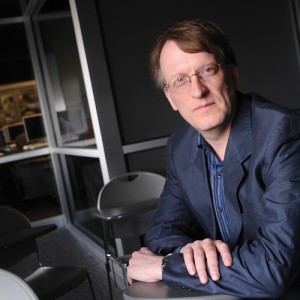A Conversation with Henning Schulzrinne

Columbia University Professor Henning Schulzrinne served as Chief Technologist at the Federal Communications Commission from 2011 to 2014. During his career, he has helped develop the key protocols that enable Voice over Internet Protocol (VoIP) and other multimedia applications, such as the Real Time Streaming and Real-time Transport Protocols. Schulzrinne recently sat down with HTF editor and founder Richard Bennett to discuss technology and the evolution of networking, especially as it pertains to next-generation 911. Schulzrinne also talked about what it was like to work at the increasingly political FCC – a “highly adversarial environment” where “you have to assume that people are not necessarily telling you the whole story.”
Too Many Lawyers?
Schulzrinne would love for the FCC to have a research branch full of engineers who can do hardware and software development. Currently the FCC has to hire contractors for some technical measurements and evaluations. In many cases it would be economically more efficient and would maintain the FCC’s expertise over many years if it could do that internally, he said.
“The complexity and adversarial nature has expanded. Things that used to be done relatively quickly now require many more lawyers. … If you have to count on anything of substance in the DC Circuit… if you want a win at the end, you have to spend a lot more lawyer time up front.” Compounding all this is the fact that the size of the agency has gone down. You need a “deep bench” because “you can’t have somebody who does AM radio on Monday and Internet peering on Tuesday.”
Because of a limited ability to research internally, outreach to the technical community in general is important. “There’s a lot more interest in policy issues, plus lots of what people do anyway touches policy, which it didn’t use to.”
Next Generation 911:
The U.S. has a “uniquely decentralized system” for Public Safety Answering Points compared to other countries, Schulzrinne said. There are more than 6,000 PSAPs that answer your 911 call, which each make technology decisions on their own. “In the telephone days, that wasn’t really a big problem” – but, with IP technology and reliance on just a few big companies for interconnection, things have changed. “A single outage no longer just affects a single switch.”
There’s one thing Schulzrinne didn’t appreciate until he worked on emergency calling systems: “It’s not just about technology being ready. It’s also about people being ready.” The technology to modernize 911 centers existed years ago, but the public safety industry needed a “general transition” of students who had gone through college without learning anything about circuit-switched technology – but knew about packet networking – before a PSAP IP transition was truly feasible.
Limited Network Data:
It’s hard for the FCC to really get a detailed picture of network performance throughout the country, Schulzrinne said, because “often the kind of data that we would need on a larger scale is data that is just not available.” With Internet peering, “all the contracts are secret,” and measurements like load and who connects to whom is only partially known. During merger discussions, the FCC gets extensive access to technical and economic data — but “you essentially have to burn whatever data you’ve gathered when the merger has been resolved,” he said. Schulzrinne cited an overarching lack of metrics in the Internet space. “We have never in the US gathered systematically and in a scientifically defensible way broad based consumer network performance data,” he said. “We would gladly, as the FCC, take data, if companies were willing to share.”




